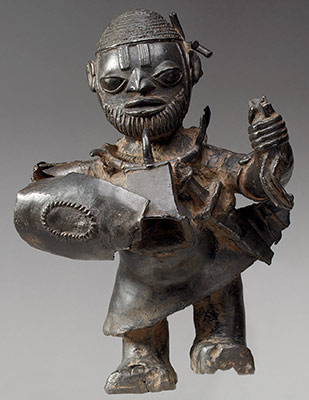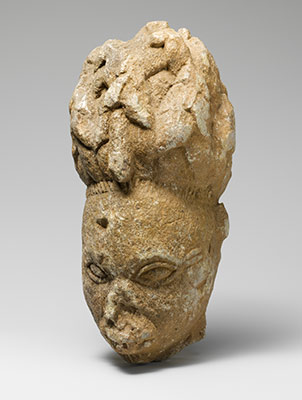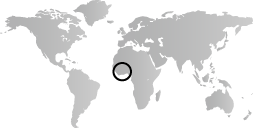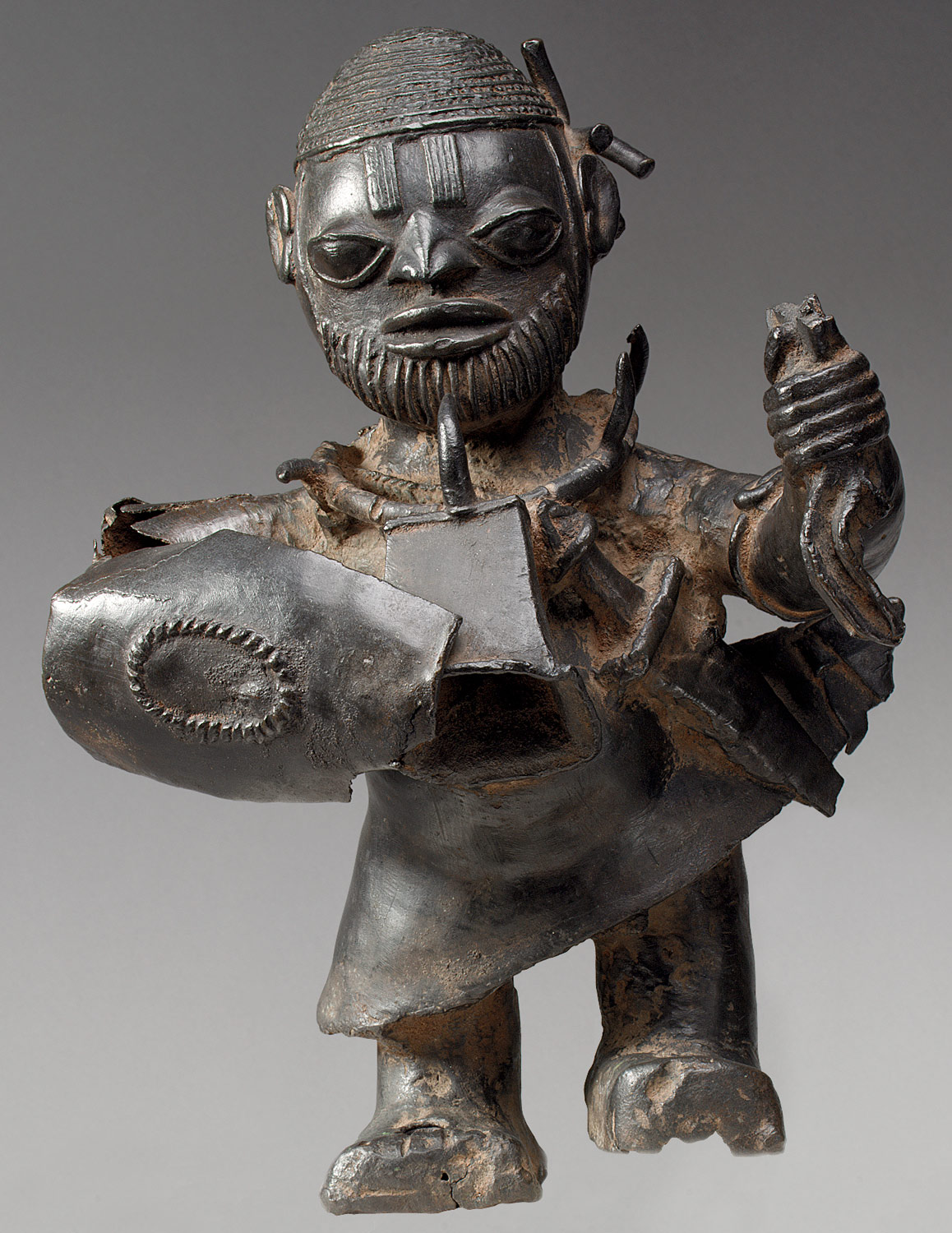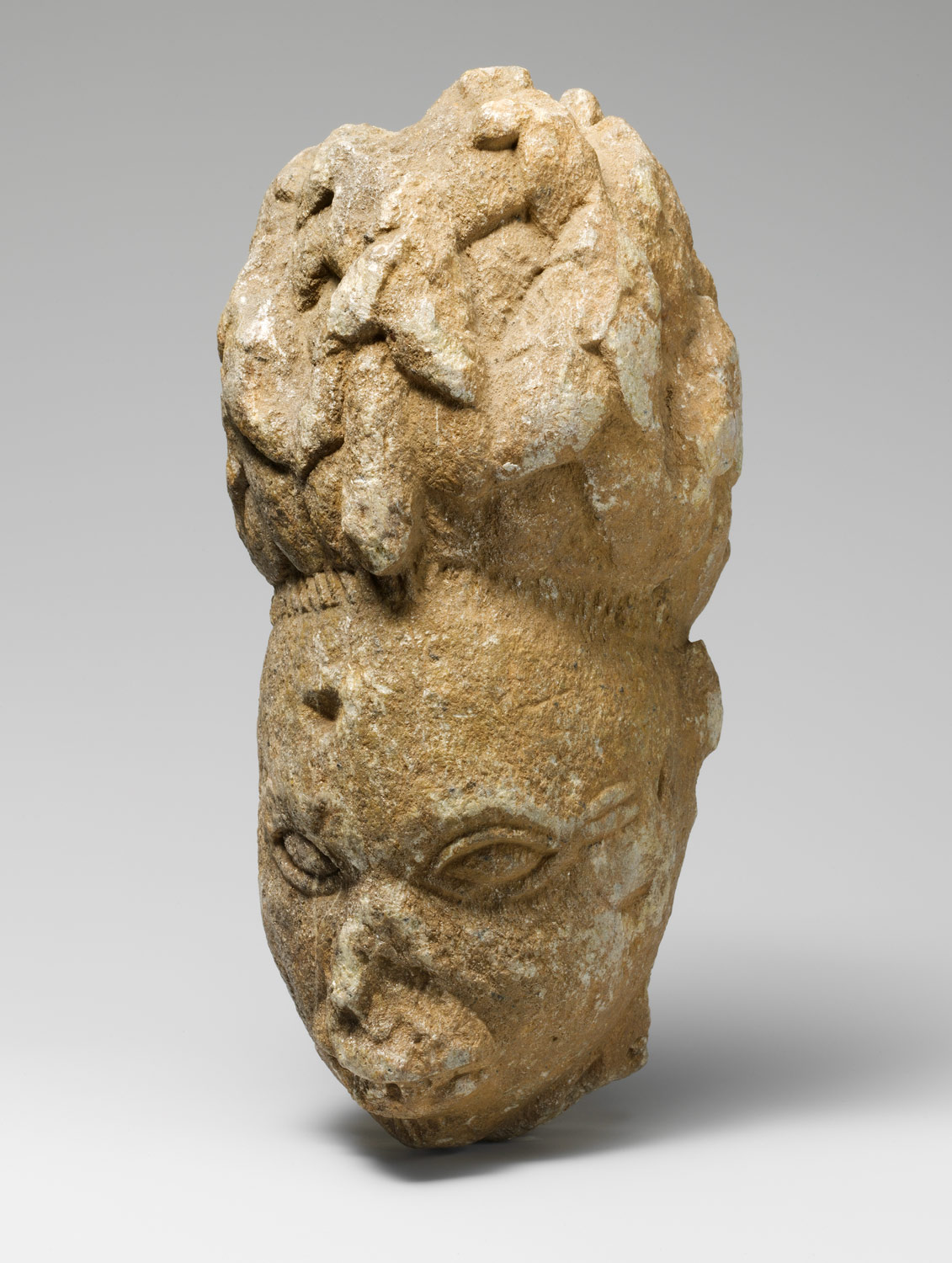Artistic production in the towns and regions of Igbo-Ukwu, Ife, and the kingdom of Benin flourishes in this period just prior to extensive European contact. The refined, naturalistic style of Ife art is applied to the production of both terracotta and bronze works. Among the best known of these is a copper-cast sculpture of a seated man known as the Tada figure. The kingdom of Benin traces its origins to the thirteenth century. Metal-casting techniques, likely introduced by Benin’s Yoruba neighbors, generate an extensive body of royal art produced over a period of nearly 500 years.
Guinea Coast, 1000–1400 A.D.
Timeline
1000 A.D.
1100 A.D.
1100 A.D.
1200 A.D.
1200 A.D.
1300 A.D.
1300 A.D.
1400 A.D.
Overview
Key Events
-
ca. 1000–1400
During the Pavement period, named for the meticulous mosaics that decorate Ife’s sacred courtyards, Ife is transformed into an urban center with extraordinarily refined arts. The pavement of Ife consists of pottery shards and small stones interwoven to produce a herringbone pattern unique to the Yoruba. Architecture flourishes, along with one of Africa’s foremost naturalistic sculptural traditions. Terracotta heads and metal ones cast using the lost-wax technique clearly depict individuals, with minor idealizing touches in the facial features. The heads, approximately lifesize, probably commemorate Ife royalty. Curiously, highly abstract cone-shaped terracotta heads are produced at the same time, perhaps intended to be used in conjunction with the naturalistic heads, with both types being mounted upon an altar to represent Yoruba concepts of the “inner head,” ori inu (abstract), and the “outer head,” ori ade (naturalistic). Europeans initially attribute Ife’s naturalistic works to Western “colonies” of ancient Greeks and others. However, no archaeological evidence has ever cast doubt upon their African origin.
-
ca. 12th–15th century
An assemblage of soapstone figures depicting humans and animals found near the Yoruba town of Esie in Nigeria have been dated to this period. Like their Ife counterparts, Esie sculptures demonstrate an emphasis on the head by depicting it proportionally large relative to the body. Little can be deduced regarding the origins of these works or the people who made them, given the disturbed nature of the site in which they were found.
-
ca. 13th century
The centralized city-state of Benin is founded by Edo-speaking people. Kingship at Benin state is formalized in the thirteenth century. Under Ewuare, oba (king) in the mid-fifteenth century, Benin develops into an empire.
-
ca. 13th–15th century
Although found 120 miles distant from Ife, the seated figure from the village of Tada is considered one of the most extraordinary works associated with Ife naturalism. The nature of its relationship to Ife or how it came to rest in Tada are still not definitively known. The oral tradition of the resident Nupe attests that it was captured from a neighboring kingdom by the culture hero Tsoede, and it is possible that the sculpture was taken from its place of origin for political reasons. Cast from copper, the figure is remarkable for its strikingly lifelike qualities, including its relaxed pose and healthy, plump flesh.
-
ca. 14th century
The second dynasty of Benin, which continues today, traces its origins to the fourteenth-century Yoruba prince Oranmiyan, who is also credited with the founding of the Yoruba Oyo kingdom on the West African coast. Oral tradition stresses an artistic link with Ife as well, citing the fourteenth-century request of the king of Benin that a bronze smith be sent to him from Ife. According to tradition, a smith named Igueghae obliged, journeying from Ife to Benin to share his expertise.
Citation
“Guinea Coast, 1000–1400 A.D.” In Heilbrunn Timeline of Art History. New York: The Metropolitan Museum of Art, 2000–. http://www.metmuseum.org/toah/ht/?period=07®ion=afg (October 2001)
